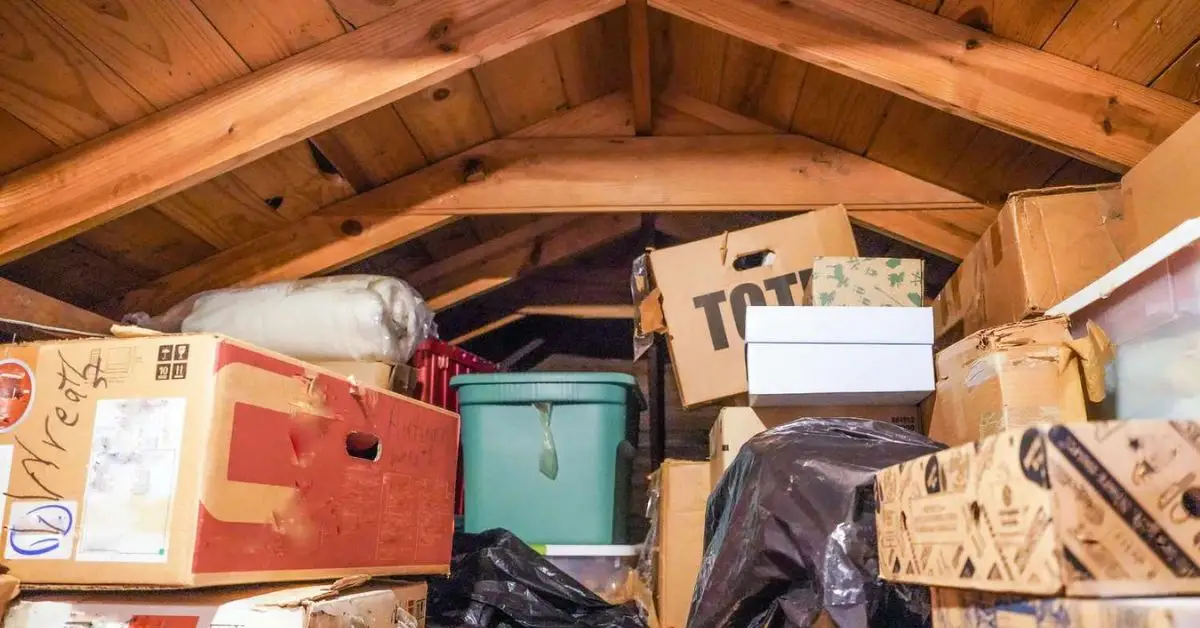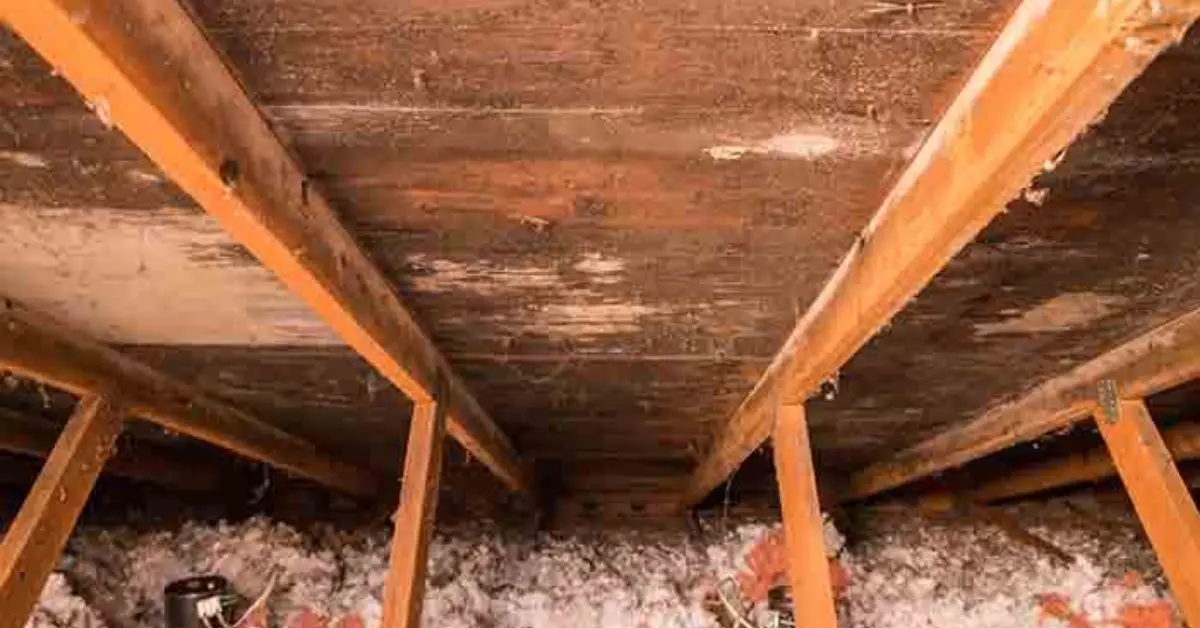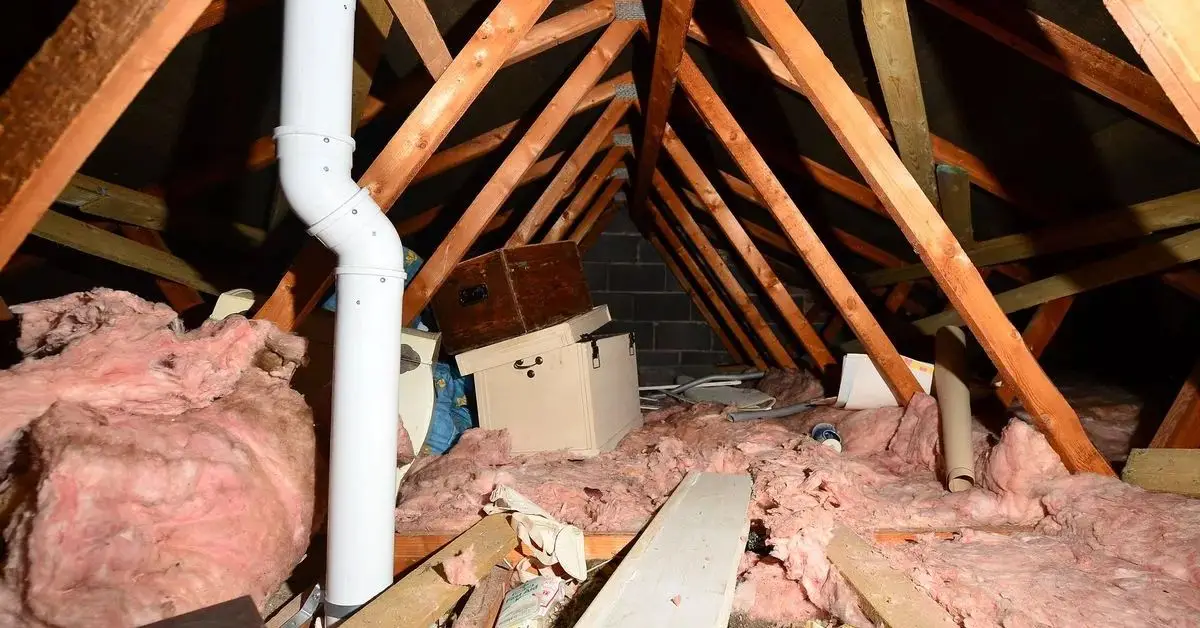7 Signs You’ve Let Your Attic Turn Into a Storage Nightmare
I didn’t realize how bad it had gotten until I went up there looking for a box of holiday lights—and couldn’t even find the floor.
If you’re anything like me, the attic becomes that “out of sight, out of mind” zone. A dumping ground for things you don’t want to deal with but can’t bring yourself to toss. Old furniture, broken appliances, childhood keepsakes, half-labeled boxes—you name it. But here’s the thing: your attic isn’t just messy. It could be sending warning signs you’re ignoring.
Too much stuff up there doesn’t just create clutter. It can damage your home, attract pests, drain your energy (literally and emotionally), and even pose safety risks. If that sounds familiar, here’s how to start decluttering your attic the smart way. Yet most of us don’t notice the red flags until something breaks—or worse, molds.
This article isn’t about making you feel guilty. It’s about helping you recognize those early signs, before a little “storage problem” turns into a bigger, expensive mess.
So, when was the last time you looked up there—and actually paid attention?
1. You Can Never Find What You’re Looking For
You go up there with one goal—grab that one box—and 45 minutes later, you’re still shifting random tubs and mentally swearing at Past You.

This is one of the clearest signs your attic has crossed the line from “storage” to overload. When stuff piles up without a system, it becomes a black hole where things go in but never come out. That small project—grabbing your winter clothes, a spare fan, or your kid’s memory box—turns into a frustrating, dusty treasure hunt.
And here’s the real cost: time, stress, and wasted money. You end up buying duplicates because you can’t find what you already own. You avoid using things you actually like because they’re buried. To help with that, try these room-by-room declutter strategies that actually work. Eventually, you stop going up there at all.
According to professional organizer Di Ter Avest, this “attic avoidance” behavior is common—and usually a sign you’ve got too much stuff and not enough clarity.
If your attic isn’t functional, it’s not helping you—it’s just holding you back. This section connects directly to the emotional and everyday frustration many people feel, while setting up the deeper risks to come.
2. You Forgot What’s Even Up There
If someone asked you to list what’s in your attic right now, could you do it?
Most people can’t. Somewhere between “just for now” and “we’ll deal with it later,” the attic becomes a long-term storage unit for forgotten items—most of which we no longer need, use, or even remember owning.
This is where clutter turns into what psychologists call mental weight. Every time you think about decluttering, your brain has to process not just the physical mess, but the decisions you’ve been putting off. That old treadmill. The broken lamp you swore you’d fix. Boxes from your last move. Keeping things out of sight doesn’t mean they’re off your mind.
When we lose track of what we’re storing, we’re usually holding onto outdated versions of ourselves—things tied to guilt, “someday” fantasies, or fear of letting go.
Clutter you can’t name is clutter you can’t control. This section shows the invisible cost of disorganized storage: not just wasted space, but mental overwhelm—and the emotional fog it creates.
3. You’re Seeing Evidence of Pests or Mold
Strange smells. Droppings. Chewed-up insulation. A weird patch of black fuzz near the rafters.
These are not normal signs of a “just messy” attic. They’re red flags—usually caused by two things: too much stuff and not enough airflow.

When your attic is packed tight, air can’t circulate properly. That trapped moisture becomes a perfect breeding ground for mold. And cluttered corners give pests like rodents, insects, or even birds the privacy they need to settle in unnoticed. Out of sight doesn’t mean safe.
According to Prospect Home Inspections, excess attic storage is one of the leading causes of undetected mold growth and pest infestations. And because most people rarely go up there, it often spreads before anyone notices.
Mold and pests don’t stay in the attic. They creep into your air, your walls, and your health. This section shifts the reader from “it’s just messy” to “this could actually harm my home and family”—a crucial mindset shift that drives action.
4. You’re Putting Stress on Your Home’s Structure
Most attics aren’t designed to be long-term storage units—especially not for heavy furniture, overstuffed bins, or boxes stacked three-high.
What many homeowners don’t realize is that attic floors are often just ceiling joists. That means they’re built to support insulation and air—not the weight of decades’ worth of stuff. Over time, that extra load can lead to sagging ceilings, cracked drywall, or even structural strain.
In one Reddit thread, a homeowner discovered hairline cracks forming in their ceiling—only to realize the attic above was packed with boxes they hadn’t touched in years.
Structural stress builds slowly. By the time you see damage from below, it’s already advanced. And insurance might not cover it if it’s deemed a result of neglect or overloading.
Most articles talk about clutter as an inconvenience. This section reframes it as a physical risk to your home’s integrity—which raises the stakes and makes the reader take the problem seriously.
5. Your Energy Bills Are Higher Than They Should Be
If your heating or cooling bills have slowly crept up over the years—and nothing else in your home has changed—it might be your attic.
When you overload the attic with boxes and bins, especially if they’re pushed up against vents, insulation, or HVAC components, you unintentionally block airflow. That compromises your home’s natural temperature regulation and makes your systems work harder to compensate.

Over time, that can mean poor insulation performance, ice dams in winter, and trapped heat in summer. Most people don’t connect the dots, but companies like Energy Insulators have found that attic clutter is a surprisingly common reason homes lose efficiency. Start by winter-proofing your home without hiring a pro to prevent energy loss and attic overuse.
And the kicker? The more stuff you cram in, the harder it becomes to even spot insulation damage or roof leaks—so the problem stays hidden.
Clutter isn’t just costing you space—it’s costing you real money. This section turns attic overload into a financial pain point, making the issue feel urgent even for readers who don’t care about organization.
6. You Feel Emotionally Stuck Around Your Stuff
Sometimes, it’s not the dust or the boxes that make you avoid the attic—it’s the feelings tied to what’s inside them.
Maybe it’s your dad’s old tools you’ve never used, but can’t let go of. Or the baby clothes from three kids ago. Or the furniture from a past life you don’t really live anymore. These things aren’t just clutter. They’re memories, identities, and guilt wrapped in cardboard.
According to Mia Danielle, emotional overwhelm is one of the strongest indicators that you’ve outgrown what you’re holding onto. And the attic, because it’s out of view, becomes the easiest place to shove those unresolved feelings.
The more things you avoid sorting, the heavier it gets—mentally, not just physically. You start saying things like “I’ll deal with it later,” or “I might need that someday,” but deep down, it feels like clutter you’re not emotionally ready to face.
This section goes beyond organizing tips. It speaks to why we keep too much stuff in the first place—and helps readers feel seen, not judged. That empathy is what moves people from passive readers to real action-takers.
7. You’re Afraid to Let Anyone Else See It
If the idea of someone going up into your attic makes you feel anxious—or worse, embarrassed—you’re not alone.
Maybe it’s the clutter itself. Maybe it’s what’s buried in there. Or maybe it’s the fact that you’re not even sure what someone might find. Either way, that instinct to hide or downplay the state of your attic is a clear emotional red flag. It means it’s no longer just “storage”—it’s a source of shame.

This isn’t about judgment. It’s about recognizing that when a space in your home becomes something you actively hide, it’s affecting more than your square footage. It’s quietly eating at your peace of mind.
Shame thrives in secrecy. By acknowledging this common but unspoken fear, you connect with the reader at an emotional level—and gently guide them toward reclaiming control, not just of their attic, but of their self-respect.
Bonus Spot: Are You Using the Attic as a “Dumping Ground”?
Be honest—does your attic look more like a holding pen for stuff you didn’t want to deal with… rather than a space with a real purpose?
If you’ve got boxes labeled “garage,” “donate later,” or “misc,” you’re not alone. Many of us unconsciously treat the attic as an overflow zone—a place where decisions go to die. It becomes the ultimate “someday” space: someday you’ll sort those tools, donate that old stroller, fix that broken lamp.
But here’s the truth: if something’s been in your attic for more than a year without action, it’s probably not waiting—it’s abandoned.
Using your attic this way doesn’t solve clutter—it just relocates it. And over time, that avoidance builds into chronic backlog, stress, and even damage to your home.
Safe Decluttering Steps to Reclaim Space
You’ve realized your attic’s overloaded. Now what?
Don’t rush to gut everything in one weekend. Attics come with heat, dust, and safety risks—so this needs to be smart, not just fast. Here’s a simple, expert-backed mini plan to start reclaiming that space safely:
1. Schedule short, manageable sessions
Choose cooler days, especially in summer. The attic heats up fast, and working in bursts helps avoid burnout or heat exhaustion.
2. Start with what you already know you don’t need
Old packaging, broken items, duplicates—this low-emotion clutter helps build momentum and make space to work.
3. Use clear, labeled bins
Not just for neatness, but for protection. Clear bins help you see what’s inside without digging, and sealed plastic keeps moisture and pests out.
4. Store smart—not everything belongs up there
Skip storing items like photos, paperwork, electronics, or anything sensitive to heat or humidity. If it warps, melts, or molds, it belongs elsewhere.
5. Don’t just move things around—move them out
Be honest: if you haven’t needed it in five years, do you really need to keep it? Donate, sell, or responsibly discard it instead of boxing it “for later.”
This isn’t about becoming perfectly organized overnight. It’s about taking safe, realistic steps that protect your home and give you control over your space again—without overwhelm.
So… What’s Really Hiding in Your Attic?
Look—I’m not here to tell you to toss everything out or become a minimalist overnight.
But if reading this made you nod quietly, maybe even feel that pinch-in-the-gut recognition… that’s your sign. Not just that you have too much stuff in your attic—but that it’s starting to cost you more than space.
Costing you time. Mental energy. Comfort. Maybe even money or your home’s safety.
The good news? You don’t have to tackle it all at once. You just need to start by noticing. One box. One shelf. One reason you’ve been holding on.
Because when you clear out your attic, you’re not just making room up there—you’re making room down here: in your day, your decisions, your home, your mind.
What’s the one thing up there you know you’ve outgrown—but haven’t let go of yet? Think about that. And when you’re ready, go get it.
For more practical tips on organizing, decluttering, and protecting your home, visit Build Like New.
Disclaimer: The information in this article is for general awareness and educational purposes only. Always consult a licensed home inspector or professional organizer for advice specific to your home’s condition or safety concerns.


